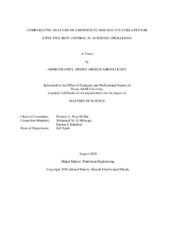| dc.description.abstract | Acidizing in the oil and gas industry is a stimulation operation with a purpose of improving a well's productivity or injectivity. The main problems resulting from this process come from the fact that acid is corrosive and a very reactive chemical. While it is mixed and pumped to the formation, it dissolves iron compounds from mixing tanks, equipment and flow lines. Iron content may increase as it reacts with formation. Live acid is the best dissolver to most iron compounds; however, problems arise when acid reacts with formation. As a result of acid stimulation process, pH of spent acid rises from zero and becomes no longer suitable dissolver to iron compounds. Unless acid contains an effective iron-controlling system, all iron in partially-spent acid will precipitate, plug formation, and cause severe formation damage.
Aminopolycarboxylate chelating agents have been used extensively in controlling iron precipitation. When iron presents in acid, these chelants interact with it and form water-soluble complexes, thus eliminate any problem that can be expected as a result of iron precipitation.
This work evaluates the performance of various chelants as iron-control agents, and their optimum versus theoretical molar ratios at different temperatures and pH environments during acidizing with different levels of iron concentrations in acid. It also addresses the impact of acid additives on the performance of different chelants, as well as their impact on carbonate cores.
Iron precipitation was monitored at the absence of a chelating agent in acid to demonstrate severity of precipitation problem at various pH environments and temperatures. Chelants were investigated at pH values of 0 to 4.5 to mimic carbonate acidizing, and at a temperature range of 71 to 300˚F. Impact of acid additives such as corrosion inhibitors, surfactants, H2S scavengers, and polymers on chelation performance was investigated. Core-flooding was conducted on carbonate cores that were flooded by acid containing the chelant to determine its influence on the permeability of cores. Chelants were tested at various mole ratios relative to iron concentration to determine optimum molar ratios, which will demonstrate how each chelant prefers to chelate iron versus other divalent cations in acid.
Precipitation was investigated by monitoring iron concentration in solution using inductively coupled argon plasma emission spectroscopy (ICAP). Precipitates were filtered and analyzed using x-ray diffraction (XRD), X-Ray Fluorescence (XRF) and Scanning Electron Microscopy- Energy Dispersive Spectroscopy (SEM-EDS). | en |


